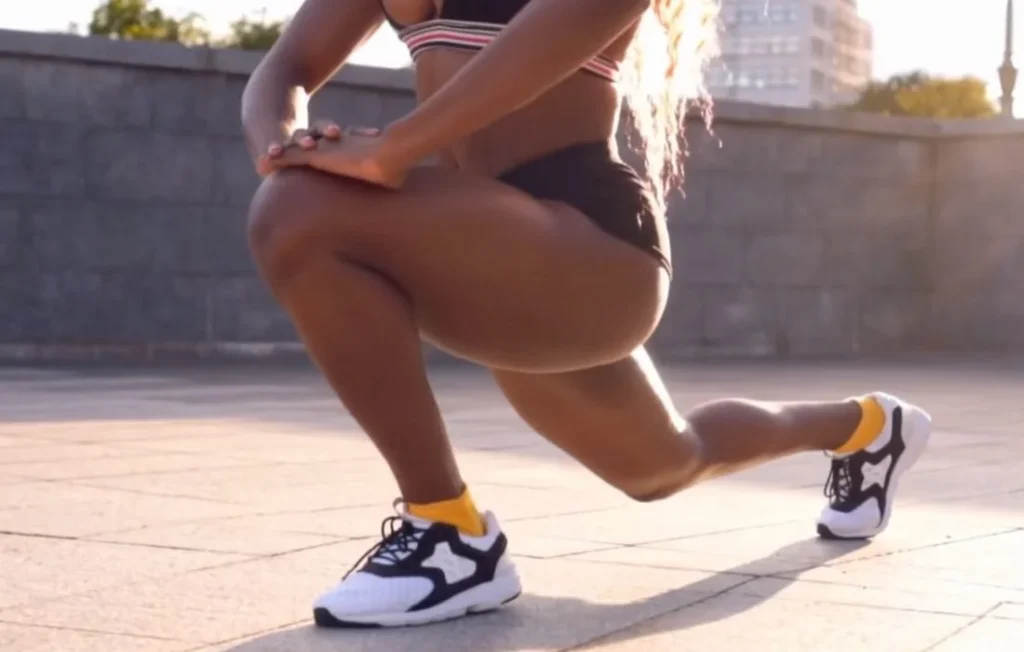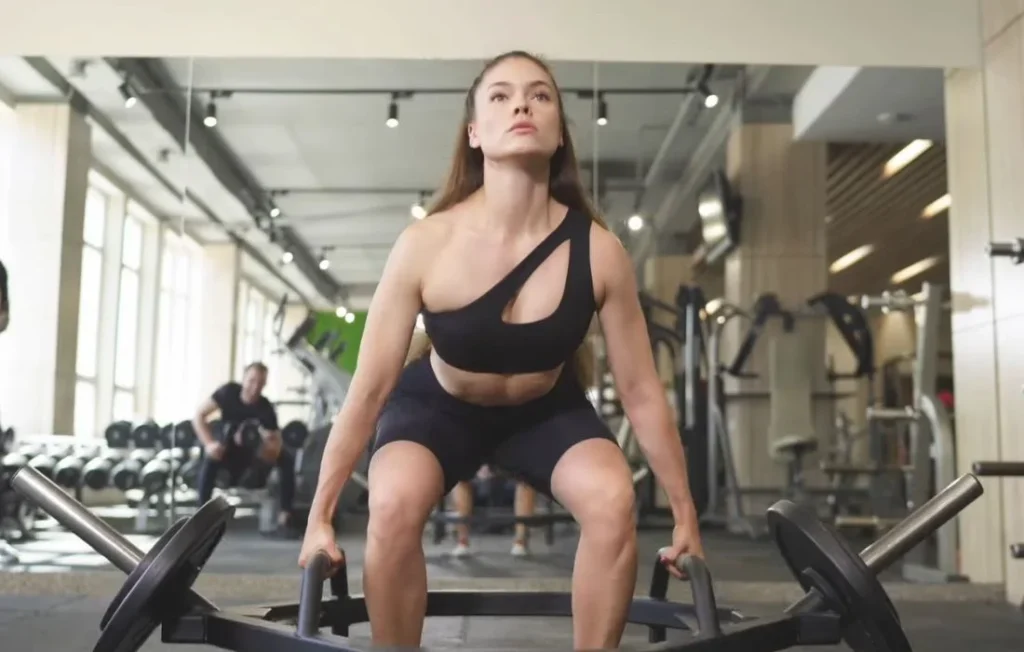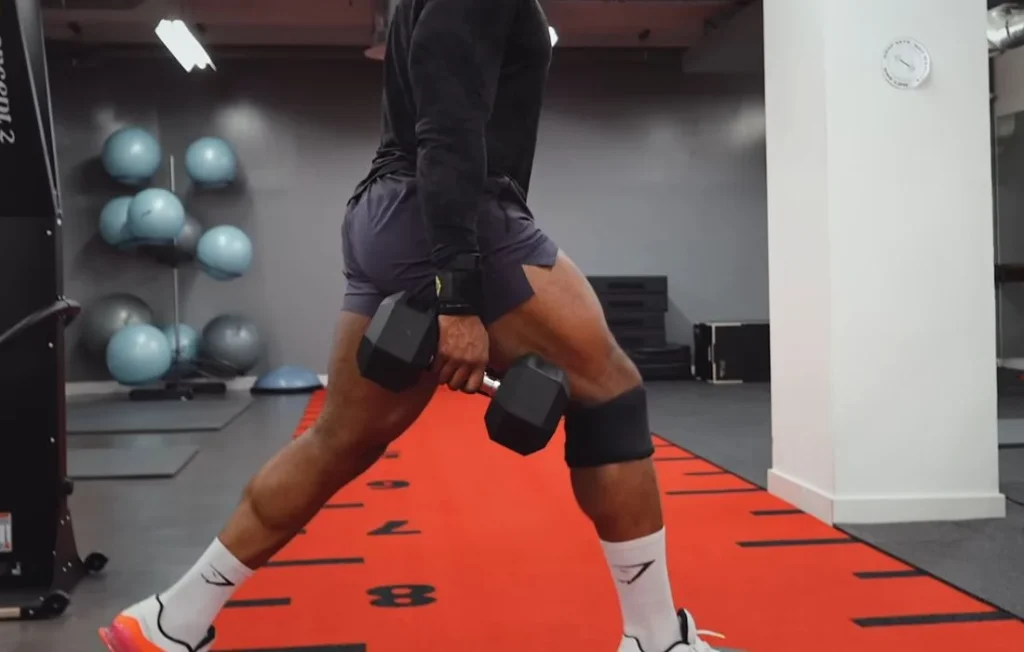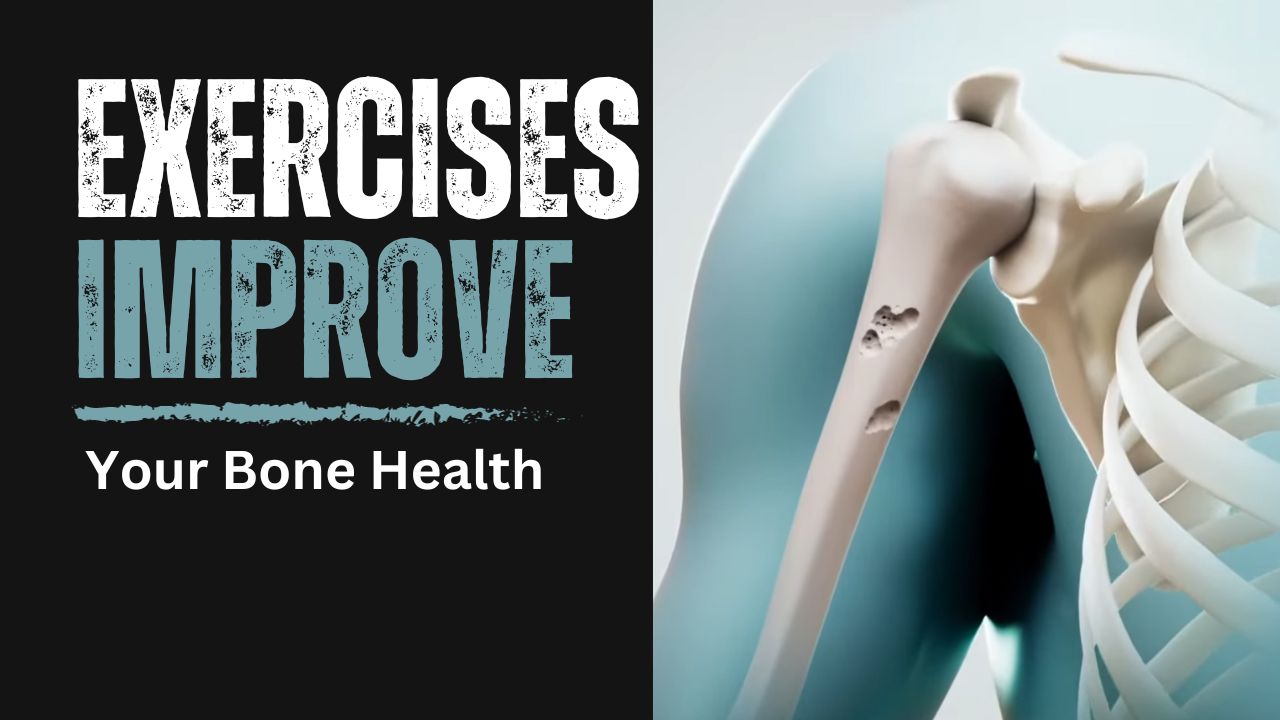When it comes to staying active and healthy, we often focus on our muscles, cardiovascular system, and flexibility. However, one critical aspect of overall health that’s sometimes overlooked is our bone health. Our bones serve as the framework that supports our body, and just like muscles, they can benefit significantly from exercise. In this article, we’ll explore how engaging in leg exercises can lead to improved bone health, ensuring that you continue to stand strong and steady as you age.
The Connection Between Leg Exercises and Bone Health
Our bones are remarkable structures that provide support for our bodies and protect vital organs. They’re not static but constantly undergoing a dynamic process called remodelling. This process involves the removal of old bone tissue and the formation of new bone tissue, ensuring that our bones stay strong and adapt to the demands placed on them. Leg exercises play a crucial role in this fascinating cycle, and understanding their connection to bone health is essential.

The Marvel of Bone Remodeling
Bone remodelling is a sophisticated and tightly regulated process. It’s controlled by various cells, including osteoclasts, which break down old or damaged bone, and osteoblasts, which build new bone tissue. This delicate balance between bone resorption and formation is influenced by mechanical forces exerted on the bones.
When we engage in weight-bearing exercises like leg exercises, we subject our bones to mechanical stress. This stress is a trigger for bone remodelling. Here’s how it works:
- Mechanical Stress: When you perform leg exercises, such as squats, lunges, or resistance training, the mechanical stress placed on your leg bones increases.
- Osteoclast Activation: This increased stress signals the activation of osteoclasts, responsible for breaking down old or damaged bone tissue in the stressed area.
- Osteoblast Response: In response to the removal of old bone tissue, osteoblasts are recruited to the site. They start laying down new bone tissue, making the bone stronger and denser.
- Adaptation: Over time, with consistent exercise, the bones adapt to the repeated stress by becoming denser and better able to handle the load.
The Vital Role of Weight-Bearing Exercises
Weight-bearing exercises are particularly effective at promoting bone health because they involve the force of gravity and the muscles pulling on the bones. The legs, being a significant weight-bearing part of the body, are instrumental in this process. Here’s why:
- Stimulation: Leg exercises stimulate multiple bones in the lower body, including the femur, tibia, and fibula. This comprehensive stimulation is crucial for overall bone health.
- Increased Bone Density: As mentioned earlier, the mechanical stress from leg exercises prompts bone remodelling. Over time, this leads to increased bone density, reducing the risk of fractures.
- Balancing Act: Strong leg muscles also play a role in balance and stability. This can help prevent falls, a common cause of fractures in older adults.
- Long-Term Benefits: Engaging in leg exercises consistently over the years can lead to long-term benefits, ensuring that your bones remain robust as you age.
Before delving into the specific leg exercises, it’s essential to understand how they impact your bones. Our bones are not static; they undergo a constant process of remodelling. This process involves the removal of old bone tissue and the formation of new bone tissue. Weight-bearing exercises, such as leg exercises, play a vital role in stimulating this remodelling process.
Types of Leg Exercises for Bone Health
When it comes to improving bone health through leg exercises, there’s a wide range of exercises to choose from. These exercises place stress on your leg bones, which in turn stimulates the bone remodelling process. Here, we’ll explore some effective leg exercises that can contribute to stronger, denser bones.
Weight-Bearing Exercises
Weight-bearing exercises are those in which you work against gravity while on your feet. These exercises are particularly beneficial for bone health because they put direct stress on the bones, promoting bone density and strength. Here are some key weight-bearing leg exercises:

- Squats: Squats are a fundamental leg exercise that engages multiple muscle groups in your lower body, including your quadriceps, hamstrings, and glutes. The weight-bearing nature of squats makes them highly effective for bone health.
- Lunges: Lunges are another excellent weight-bearing exercise. They target the quadriceps, hamstrings, and glutes while also improving balance and stability. Lunges can be performed in various directions to engage different muscle fibers.
Non-Weight-Bearing Leg Exercises
While weight-bearing exercises are crucial for bone health, non-weight-bearing exercises also have their place in a balanced fitness routine. These exercises can be particularly useful for individuals who may have mobility issues or need low-impact options:

- Leg Raises: Leg raises can be done while lying on your back or on your side. They target the hip abductors and help strengthen the muscles around the hips and thighs.
- Leg Circles: Leg circles are a low-impact exercise that involves rotating your leg in a circular motion. They improve hip mobility and can be done in various directions to work different muscle groups.
Resistance Training
Resistance training involves using external weights or resistance bands to challenge your muscles. While it’s not purely weight-bearing, it can still contribute to bone health by strengthening the muscles around your bones:

- Leg Presses: Leg presses are a staple in resistance training for the lower body. They target the quadriceps, hamstrings, and glutes. Adjusting the resistance level can provide progressive overload, which is essential for bone remodelling.
- Calf Raises: Calf raises work the calf muscles and the Achilles tendon. Strong calf muscles contribute to better stability and can help prevent falls.
Plyometrics
Plyometric exercises involve explosive movements that require a quick contraction of muscles. While they may not be suitable for beginners, they can provide a significant bone-strengthening challenge:

- Box Jumps: Box jumps require you to jump onto a raised platform and then land softly. This exercise is excellent for developing power in your legs and can stimulate bone remodelling.
- Jump Squats: Jump squats combine the benefits of squats with explosive jumps. They engage the lower body muscles intensely and help improve bone density.
A variety of these leg exercises in your fitness routine can provide a well-rounded approach to improving bone health. Remember to start at your fitness level and gradually increase the intensity and complexity of your workouts to continue challenging your bones and muscles.
Benefits of Strong Legs for Bone Health
Strong legs contribute significantly to your overall bone health. They provide stability, balance, and support, reducing the risk of falls and fractures, especially as you age. Let’s explore some of the key benefits in more detail.
Reduced Risk of Fractures
One of the most notable advantages of having strong leg muscles is a reduced risk of fractures, particularly in the hip and spine areas. Here’s how strong legs contribute to fracture prevention:
1. Improved Balance and Stability
Strong leg muscles help you maintain better balance and stability, reducing the likelihood of falls, especially as you age. Falls are a leading cause of fractures, and preventing them is a key component of bone health.
2. Cushioning Effect
The muscles in your legs act as shock absorbers. When you walk, run, or engage in any weight-bearing activity, your leg muscles absorb some of the impact, sparing your bones from excessive stress. Weaker leg muscles can result in greater impact on your bones, increasing the risk of fractures.
3. Enhanced Bone Density
Regular leg exercises, which strengthen the leg muscles, stimulate the bone remodeling process. This process involves the removal of old bone tissue and the formation of new, denser bone tissue. Over time, this contributes to increased bone density, making your bones more resilient to fractures.
Better Posture and Alignment
Strong leg muscles are essential for maintaining proper posture and alignment of your spine and lower body. When your muscles are strong, they provide better support for your bones, reducing the risk of developing conditions like osteoporosis and spinal deformities.
Enhanced Functional Independence
Strong legs are closely linked to functional independence, particularly as you age. Maintaining the ability to stand up from a seated position, climb stairs, or lift objects without strain is crucial for daily living. Strong leg muscles make these activities easier and reduce the risk of injury.
Efficient Energy Transfer
Strong leg muscles improve the efficiency of energy transfer throughout your body. This means that when you move, your muscles work together more effectively, minimizing the strain on any one area, including your bones.
Pain Reduction
Weak leg muscles can lead to joint pain and discomfort. Strong muscles provide better support for your joints, reducing the risk of conditions like knee osteoarthritis. Additionally, strong leg muscles can help alleviate back pain by reducing the strain on your spine.
Long-Term Benefits
Investing in strong leg muscles at a young age can have significant long-term benefits. Building and maintaining leg strength throughout your life can help you preserve bone health well into old age, reducing the risk of fractures and age-related bone conditions.
By engaging in regular leg exercises and activities that strengthen these muscles, you are not only building strength and stability but also fortifying your bones against fractures and age-related bone issues. So, whether you’re a young fitness enthusiast or someone looking to improve their overall health, remember that strong legs are your allies in the quest for strong and resilient bones.
Proper Form and Safety Precautions
Maintaining proper form and taking safety precautions during leg exercises is paramount to prevent injuries, optimize results, and ensure the long-term health of your bones and muscles. Whether you’re a beginner or an experienced fitness enthusiast, here are some essential guidelines to follow:
1. Maintain Proper Posture
Good posture is critical to effective leg exercises and injury prevention. Keep these points in mind:
- Stand tall with your shoulders back and chest up.
- Engage your core muscles to support your spine.
- Keep your back straight, especially when bending at the hips or knees.
- Ensure your knees align with your ankles during movements.
2. Use Appropriate Weights and Resistance
Choose weights or resistance levels that are suitable for your fitness level. Using weights that are too heavy can lead to improper form and potential injury, while using weights that are too light may not provide the desired benefits.
3. Focus on Range of Motion and Control the Movement
Perform leg exercises through a full range of motion to engage the targeted muscles effectively. Avoid cutting movements short, as this can limit the benefits and increase the risk of injury. Maintain control over your movements throughout the exercise. Avoid using momentum to lift weights, and lower them slowly to engage your muscles fully. Jerky or uncontrolled movements can strain your muscles and joints.
4. Mind Your Knees
Knee health is essential when performing leg exercises. Protect your knees by:
- Ensuring that your knees do not extend beyond your toes during squats and lunges.
- Keeping your knees in alignment with your ankles.
- Avoiding excessive inward or outward rotation of the knees.
5. Listen to Your Body
Pay attention to any discomfort, pain, or unusual sensations during your leg exercises. If you experience pain, stop the exercise immediately. Pushing through pain can lead to injuries. Maintain a consistent breathing pattern during your leg exercises. Typically, you should exhale during the effort or exertion phase (e.g., when pushing a weight) and inhale during the relaxation or return phase.
6. Hydration and Nutrition
Stay hydrated before, during, and after your workout. Proper nutrition and hydration support muscle and bone health. Ensure you consume a balanced diet with adequate nutrients like calcium and vitamin D for bone strength. After your leg workout, spend time cooling down with gentle stretches to improve flexibility and reduce muscle soreness. Focus on stretching the muscles you’ve worked on, holding each stretch for 15-30 seconds.
7. Rest and Recovery
Allow your leg muscles time to recover between workouts. Overtraining can lead to injuries and hinder progress. Aim for 48 hours of rest before working the same muscle group again. If you’re new to leg exercises or have specific health concerns, consider working with a certified fitness trainer. They can provide personalized guidance, ensure your form is correct, and tailor exercises to your fitness level and goals.
Real-Life Success Stories
To inspire and motivate you on your journey to better bone health through leg exercises, let’s explore the real-life success stories of individuals who have experienced remarkable improvements in their lives as a result of their dedication to leg exercise routines.
Success Story 1: Sarah’s Journey to Strength and Independence
Sarah, a retired schoolteacher in her 60s, had always been active but started to notice a decline in her balance and strength. Concerned about her bone health, she decided to commit to a regular leg exercise routine. She began with simple bodyweight squats and gradually progressed to more challenging exercises like step-ups and resistance training.
Sarah’s Results:
- Improved balance and stability.
- Increased leg strength, allowing her to perform daily tasks with ease.
- Greater confidence in her ability to maintain an active lifestyle.
- A reduced risk of falls, which is crucial for her age group.
- A newfound sense of independence and vitality in her retirement years.
Success Story 2: Mark’s Transformation Through Plyometrics
Mark, a 35-year-old software engineer, led a sedentary lifestyle for years, which took a toll on his bone density. He decided to make a change and incorporated plyometric leg exercises into his routine. Although he faced initial challenges, he persevered.
Mark’s Results:
- A significant boost in leg power and explosiveness.
- Noticeably increased bone density after a year of consistent plyometric training.
- Enhanced endurance and stamina for other physical activities.
- Improved overall fitness and vitality.
- A newfound passion for exercise and a healthier lifestyle.
Success Story 3: Lily’s Post-Injury Recovery
Lily, a 45-year-old nurse, experienced a leg injury that left her physically weak and mentally discouraged. Determined to regain her strength and mobility, she embarked on a tailored leg exercise program. Starting with gentle rehabilitation exercises, she gradually progressed to more advanced movements.
Lily’s Results:
- Remarkable recovery of leg strength and flexibility.
- Reduced pain and discomfort related to her injury.
- Restored mobility and ability to perform her nursing duties.
- A newfound appreciation for the importance of leg exercises in rehabilitation.
- Inspiration to help others on their recovery journeys.
Success Story 4: James’ Athletic Achievement
James, a 28-year-old fitness enthusiast and amateur athlete, wanted to take his athletic performance to the next level. He focused on leg exercises to improve his speed, agility, and overall power. He integrated plyometrics and resistance training into his routine.
James’ Results:
- Dramatically enhanced leg power, allowing him to sprint faster and jump higher.
- Improved endurance and stamina, are crucial for his athletic pursuits.
- Reduced risk of sports-related injuries due to strengthened leg muscles.
- Success in competitions and a growing passion for sports and fitness.
- A testament to how dedicated leg exercises can elevate athletic performance.
Conclusion
Incorporating leg exercises into your fitness routine can have a profound impact on your bone health. Strong legs provide stability, reduce the risk of fractures, and contribute to an overall sense of well-being. Whether you’re a beginner or an advanced fitness enthusiast, there are leg exercises suitable for your level. Remember to maintain proper form, support your efforts with a balanced diet, and prioritize rest and recovery. Your bones will thank you for it in the long run.
Incorporate these exercises into your daily routine, prioritize proper form, and don’t forget to nourish your body with a balanced diet rich in bone-supporting nutrients. Hydration, rest, and patience will also play vital roles in your success. In the end, it’s not just about strong legs; it’s about a stronger, healthier you. So, let your journey to better bone health begin, one squat, one lunge, and one step at a time. Your bones will thank you for it in the years to come.

Chris David (Auther)
With my pen as my compass, I embark on a thrilling odyssey through the intricate landscape of health and fitness. In each blog post, I unveil the enigmatic realms of well-being, weaving together evidence-based wisdom, practical counsel, and a sprinkle of motivational stardust to illuminate your path toward boundless vitality and unwavering strength.
